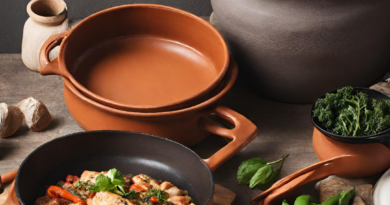How does clay cooking affect the color of food?
Cooking food in clay pots can have an impact on the color of the dishes, and the extent of this effect depends on several factors, including the type of clay used, the seasoning of the clay pot, and the cooking process. Here’s how clay cooking can affect the color of food:
1. Clay Type:
Different types of clay, such as earthenware, stoneware, and fireclay, can vary in color and porosity. Earthenware clay, for example, is often reddish-brown, while stoneware clay can be light gray or beige. These colors can subtly influence the appearance of the food.
2. Seasoning:
Unglazed clay pots, which are common for cooking, are porous and absorb some of the moisture and flavors of the food. Over time, as the pot is used and seasoned, it develops a patina or non-stick surface. This patina can darken the color of the pot’s interior and may contribute to a slightly darker hue in the food. The absorbed flavors can also impart subtle color changes.
3. Retention of Natural Colors:
Clay pots are excellent at retaining the natural colors of ingredients. When cooking vegetables, for example, the slow and even heat distribution in a clay pot can help preserve their vibrant colors. This can result in dishes that look fresher and more visually appealing.
4. Browning:
Clay pots can promote browning, particularly when meat or poultry is seared or roasted in them. The porous surface of the pot, along with the even heat distribution, encourages Maillard reactions (browning reactions) that can enhance the color and flavor of meat dishes.
5. Reduction in Overcooking:
Clay pots’ ability to retain moisture helps prevent overcooking and dehydration of food. Overcooked food often appears less vibrant and can lose its original color.
6. Use of Spices and Ingredients:
The choice of spices, herbs, and ingredients in a recipe can have a more significant impact on the color of the dish than the clay pot itself. Vibrant spices like turmeric or paprika can give dishes a rich color, while ingredients like tomatoes can add a red hue.
7. Slight Darkening:
Some dishes cooked in clay pots may experience slight darkening due to the absorption of moisture and flavors into the clay. This can be especially noticeable in long-cooked stews and braises.
Overall, the impact of clay cooking on the color of food is often subtle and can enhance the visual appeal of dishes by preserving natural colors and promoting browning. While clay pots may contribute to a nuanced change in color, the primary factors that influence the final appearance of a dish are the ingredients, spices, and cooking techniques used.



